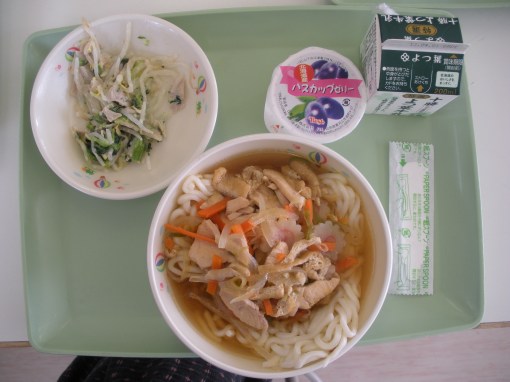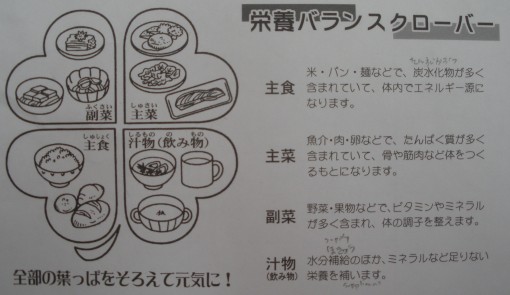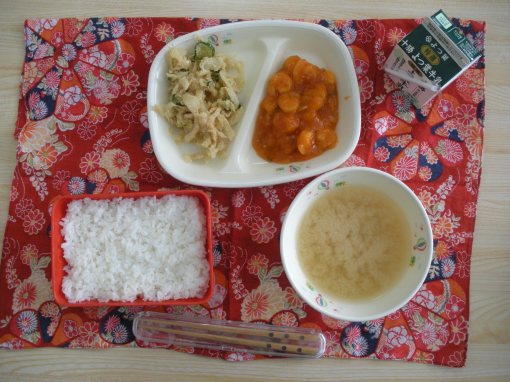March 21st, Thursday:
- Kashiwa Udon (Udon, Chicken, Onion, Carrot, Green Onion, Aburaage, Naruto Surimi)
- Milk
- Spinach and Beansprout Salad (Spinach, Beansprout, Ham)
- Haskap Jelly
- Kcal: 688
Long ago, Haskap was valued by the Ainu people as an elixir of youth. Haskap in the Ainu language means “Many on top of the branch.” It has a rich flavour that is both sweet and sour.
Saint Patrick’s day was last Sunday, something I completely forgot about until I checked my Facebook page and stared wondering why everyone was posting pictures of green things. I like St. Patrick a lot–I mean, he drove the snakes out of Ireland and wears an incredibly awesome hat. St. Patrick’s Day celebrations however seem, like nearly all modern celebrations, superficial and rather meaningless to me unfortunately. That said, when I was child, for St. Patrick’s Day my mother would always make us green eggs and ham, green muffins, mint milk shakes, and pistachio pudding for dinner. I feel that dinner was representative of my mother’s cooking style: strange, but full of love?
Balanced Nutrition Clover
Main Dish: Rice, bread, or noodles etc. that have lots of carbohydrates that give your body energy.
Main Side: Seafood, Meat, or eggs etc. that include a lot of protein, which help our bodies build our bones and muscles.
Second Side: Vegetables and fruits, including lots of vitamins and minerals, which keep us healthy
Soup (Drink): Besides supplying us with water, it supplements our nutrition with minerals etc. which we cannot do without.
かしわうどん
牛乳
ほうれん草ともやしのサラダ
ハスカップゼリー










